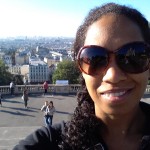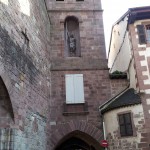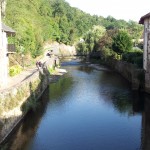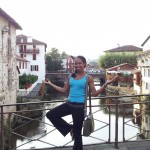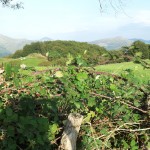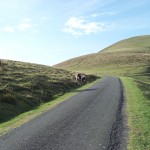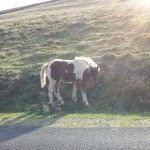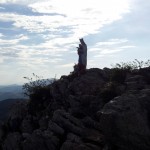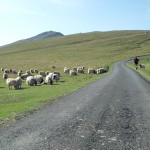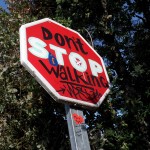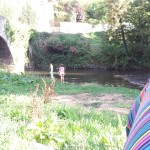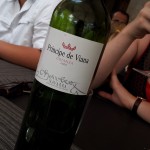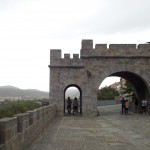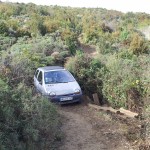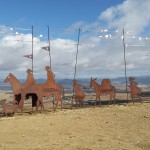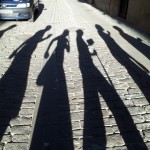Dear Seattle,
I’ve been writing you this letter for a over a week. Walking all day, I have a lot of time to think about what I would say. I started with a blow by blow replay of a hurried sightseeing day in Paris; reuniting with my first fellow pilgrim from the plane (whose name I now know); and the night in St. Jean-Pied-Du-Port in a quirky 600 year old hostel run by a retired Parisian cum Camino philosopher.
I contemplated the story of my first day on the road and the steep climb from St. Jean into Roncevalles; wandering among sheep and horse herds; meeting other pilgrims; and the life of a pilgrim (where we sleep, how we eat, what we do besides walk all day). As the days stacked up one on top of the other, these planned entries began to pile up in my mind, creating a massive logjam of adventures, stories and impressions that might not make sense to you in the same way they do for me. Plus, a simple Google of “Camino De Santaigo” will let you know exactly what milage I’m covering, where I’m staying and what I’m eating.
I have to take a new tack with what I planned to blog about when it comes to this trip. So for now, let me tell you about how time passes when you spend your day walking 17-20km.
Very. Slowly.
You’ve probably heard of the slow food movement?
Well this is slow travel. Each day, I’m up at 6, walking by 7, stopping for a late breakfast or lunch, and then continuing on until 2 or 3pm until I’ve gotten in the 17-20+km to the next aubergue (pilgrim hostel) usually in a small town. I check in, shower, do laundry (yes almost every day, when you have only 3 sets of clothes), take care of my feet/legs, walk around town, have dinner (usually with my cadre of fellow pilgrims) and then head off to bed. If I’m lucky there’s a bit of energy left for reading a chapter of a book then off to bed to do it again the next day.
All to walk the same distance that would take a few hours by car. Why?
Because walking makes you slow down. Especially when walking with a backpack weighing (ideally) 10% of your body weight (in my case, about 17% with lunch and water) across unfamiliar terrain guided by blue and yellow seashell signs (best case) and yellow spray painted arrows (worst case).
It’s a hell of a way to see a country. So far, I’ve walked hills and valleys, seen cities, villages and farmland. The country is by turns beautiful, ugly, forgettable and breathtaking. There are 1000 year old churches and brand new towns growing side by side. I’ve been given directions by college students, farmers and storekeepers. I’ve ordered coffee (con leche) and lunch to go (bocadillo con jamon y queso – para llevar).
I’ve been so struck by a view I’ve had to stop walking, and so exhausted that all I can do is plow forward, chin to chest, one step at time into the next village. Some times I walk by myself and others with fellow pilgrims form all over the world, but I am never alone. Our reasons for walking are as varied as the countries we come from. And this isn’t just a tourist walk. There are as many Spaniards on the trail as visitors. I’ve practiced my Spanish, learned a little French and communicated in the few universal words we share (“Buen Camino” is the standard greeting, no matter what your origin).
Faces are beginning to become familiar now – there is the core group I know from leaving St. Jean, and new faces that come and go every day. We are beginning to greet one another by name and country. I have had deep conversations about life and purpose, and broken ones split between languages and sign. In each town we look for one another at the end of the day, call out greeting and inquire about the welfare of others. We miscommunicate, disagree or even argue at times. But we are family. As much as I miss my home, friends, my partner, I am never alone on this trail. The Camino is an international walking community, a traveling human river.
And effort wise, this is no vacation. I spend a considerable amount of time taking care of my feet and legs at the end of the day. First aid kits on the Camino are blister care first. An infected blister or a misstep can end the pilgrim’s journey. I’m not sure what the rate of attrition is due to injury, but I have seen more than a few faces disappear over the last few days.
I’m not immune. Although largely blister free (I teeny swelling between my pinkie toe and ring toe hardly counts), the shin splints I never suffered from after years of running has often sent searing licks of pain up my left leg into the knee on this trail. Whether it’s a combination of the hard pack and the weight of my bag, the long distances or the repetition, caring for the muscles in my lower legs has become an intense priority. The evening ends with massaging arnica into my calf and ankle before bed and the morning begins with taping my leg for support.
In a few days the muscles with toughen and the pain will fade, but in the meantime there is more walking. I’ve made friends with discomfort and learned patience: moving slowly and taking more breaks gives me even more time to appreciate the changing landscape. It gives me more time to think – about what’s important in my life and why I am here – and to be grateful for each step.
Anne Lamott says “Here are the two best prayers I know: ‘Help me, help me, help me’ and ‘thank you, thank you, thank you.’”
If I have any goal on the Camino, it’s learning to say more of the latter and less of the former, every day.
Now, for some photos!
